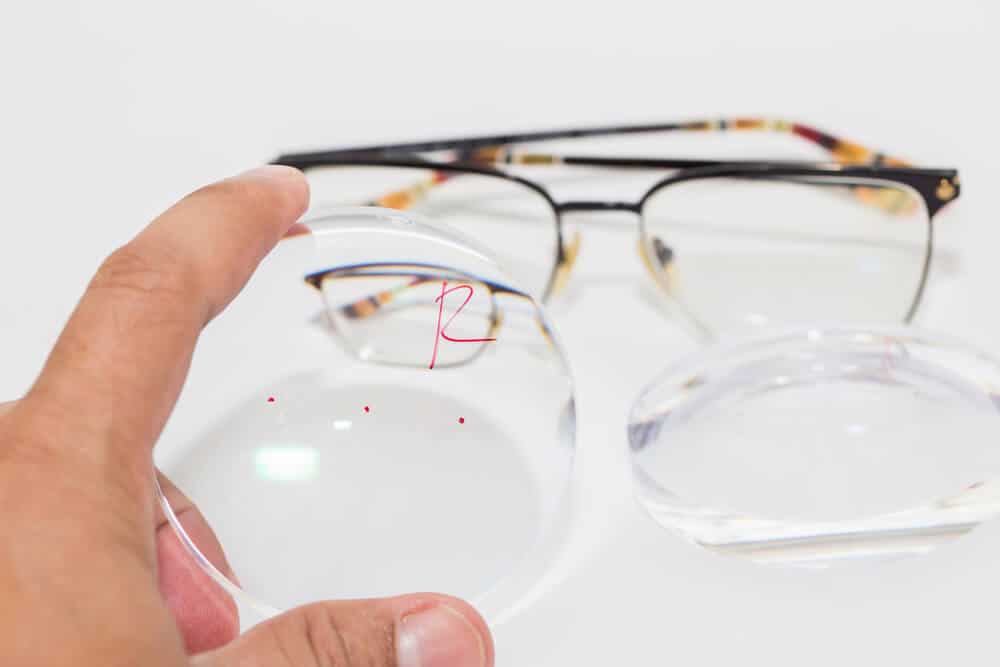After the age of 40, we begin to experience more changes in our vision. Unfortunately, this causes our prescription to change, which could require several magnifying powers to correct blurry or dim vision.
Progressive lenses allow glasses to hold various prescriptions. This lens is a powerful visual aid for anyone who has trouble focusing or requires a stronger prescription for every distance.
Progressive Lenses Explained
Progressive lenses or multifocal lenses look like average eyewear except they contain various powers or prescriptions. Progressive lenses allow you to see at different distances without using different frames.
If you need a combination of various prescriptions to see, then progressive lenses may benefit your vision. This is because they are accommodating when completing tasks close up, far away, and from a middle distance.
Although these lenses contain various prescriptions, they need lines allowing for a seamless visual experience. This smooth, seamless experience is one of the many benefits of wearing progressive lenses.
Benefits and Drawbacks of Progressive Lenses
One of the most significant benefits of progressive lenses is the smooth transition. As a result, you won’t have to worry about any jumpy or broken changes when focusing on different distances.
This jumpy transition, unfortunately, tends to happen when wearing trifocals and bifocals. Also, you won’t have to be bothered with switching between different glasses.
In terms of drawbacks, you will need some time to adjust. But, again, these are various prescriptions in one lens which means you have to learn how to see out of each section correctly.
This learning curve can be challenging, but with a little practice, you can get used to it. If you’re completing tasks on the computer or at mid-distances, you should look into the middle area of your lenses. If you’re reading, look into the lower regions of the lenses, and look straight if you’re focusing on further distance.
It’s important to note that some people don’t adjust, and you may experience symptoms while getting used to the lenses. These include nausea and dizziness due to looking into the wrong areas of the lens. Your peripheral vision may also become distorted.
Lastly, the cost is something you need to keep in mind. Unfortunately, progressive lenses tend to cost a little more than bifocals. Between single vision vs progressive lenses, progressive lenses are often $100 more expensive.
What Are the Different Parts of Progressive Lenses?

On each lens, you will be able to see three sections. Within each section is a visual region, and there are a total of five areas. These regions are distance, intermediate, and near, which are the vertical regions of the lens.
The peripheral distortion regions are on the left and right sides of the lens. These regions are unprescribed and only provide a little visual aid. They are mostly meant to create unity throughout the lenses and keep your vision steady.
It’s also important to know there will be some engravings or markings on your progressive lenses. These markings represent various information about the lens, including:
- Type of progressive lens
- Horizontal lens position
- Material of the lens
- Vertical lens position
- Axis position
- Strength of the ADD value
- manufacturer
How well you can see the engravings depends on the manufacturer. However, you can typically see the engravings much better in the light. If you need some identifying information about your lenses, the engravings may be able to help, such as telling you the power of your prescription.
One primary purpose of these engravings is for the optometrist. They help them to ascertain fields of vision for intermediate, near proper, and further distances. This is critical for optometrists since these engravings also assist them in finding out the value of the prescription, making it easier to adjust prescriptions during eye appointments.
How Do Single-Vision vs Progressive Lenses Differ?
One of the main differences between single-vision vs progressive lenses is the power across each lens. With progressive lenses, the prescription is mainly in the lower part of the lens. On the other hand, single-vision lenses have the medication spread across the lens, making the field of vision more thorough.
Unfortunately, progressive lenses make it difficult to focus on details and it may take time to adapt. Also, as previously mentioned, progressive lenses are a little more costly. You should strongly consider which lenses suit you best when choosing glasses. Understanding the advantages and advantages of each can assist you in strengthening your sight in the long run.
What Are the Differences Between Progressive Lenses and Bifocals?
Interestingly enough, both progressive and bifocal lenses can help the visual condition of presbyopia. However, there are a few differences between single-vision vs progressive lenses.
Firstly, progressive lenses allow for a smooth transition between prescriptions within the lens. However, bifocal lenses have a definite line that divides near and far vision within the lens.
Progressive lenses also allow for a wider range of vision compared to a more narrow range in bifocal lenses. However, many glasses wearers view bifocal lenses as more comfortable than progressive lenses.
Lastly, bifocal lenses can cause problems when reading on the computer. This strengthens the chances of developing computer vision syndrome. However, progressive lenses adjust to your shift in focus. This makes specific tasks much easier to complete visually.
Do You Need Progressive Lenses?

So, what are progressive lenses best for? Progressive lenses are ideal for those who may have presbyopia. Although they are used for various eye conditions, those suffering from presbyopia typically use them the most. Presbyopia occurs when the eye loses its ability to focus on objects nearby. People usually start having symptoms of this condition after 40.
If you’re having trouble focusing on objects up close and far away, progressive lenses may be the solution. People who spend several hours on the computer daily can also benefit from progressive lenses to allow them to switch between tasks requiring near and far sight.
Now that you know what progressive lenses are, you can confidently choose which type of lens will best suit your needs. Contact Art of Optiks today to schedule your comprehensive eye exam.

